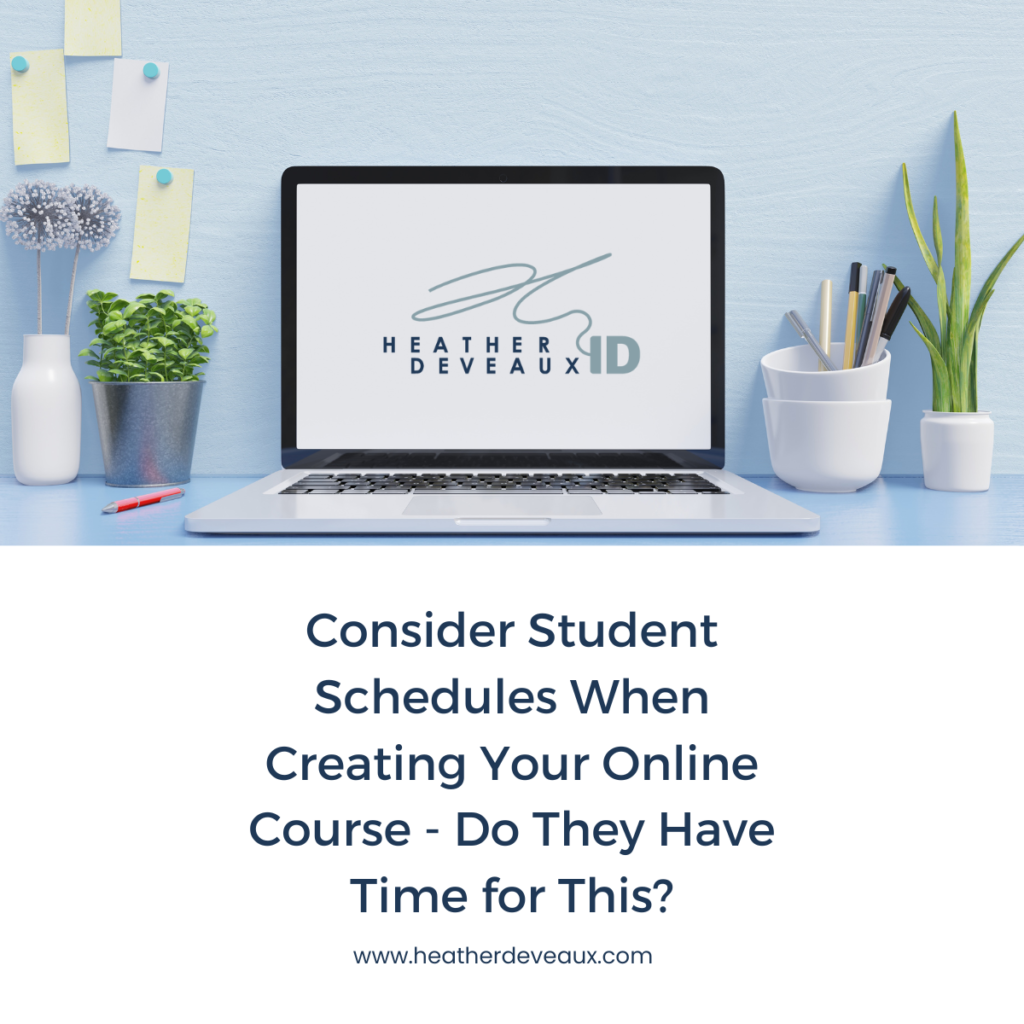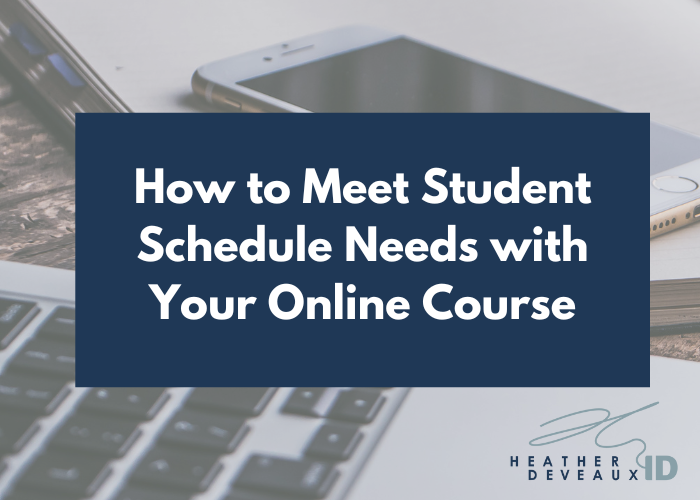How to Meet Student Schedule Needs with Your Online Course
Student schedule needs are not often considered when sitting down to create an online course, but they should be. When organizations think about developing an online course, they rarely consider the availability of their students. We cite a shared consensus that on-demand fixes all problems.
And normally, I would agree. Making learning content available for consumption at any time should help make education accessible to other people. You probably remember those commercials from decades ago? The ones talking about correspondence courses or mail-order courses that you could complete in your own time. And isn’t everyone talking about the success of online courses in mass marketing? Sure, but not all courses are created equal, and neither are all students.

Do you want to create an online course for a group of university students looking to improve their study skills? Do you want to develop an awareness package for diversity, equity, and inclusion? It’s important to consider the availability of your student, in addition to their readiness to learn.
Student Schedule Needs and Learner Readiness
Adult learning principles encourage educators to assess the readiness of a learner before digging into learning. Adults do this naturally, often without even realizing it. We tend to delay signing up for a course or a conference. We cite the lack of understanding, time, and resources. But it all adds up to the same thing: we’re not ready. So when you consider creating an online course, you want to consider the readiness of your students AND their availability.
When people tell you they don’t have time to take another online course, believe them. It might not be the time that is the real issue, however. The excuse of time is a common mask for something else that is going on. Whether that’s fear, or cost. Or, it could be something else. If your student works on a full-time basis, when do they have time to take an online course? What about if they work a part-time job and are trying to grow their side hustle in the evenings? When do they have time to take an online course? If left to their own devices, we know that many people will just continue to put off signing up. And even if they do sign up, they might never actually start the course.
Consider Student Schedule Needs Before You Create Your Online Course
When this happens, it can be helpful to understand the time constraints of your students. This is especially true if you have a lot of content to deliver. Of course, being concise is important, but in some cases, depending on the subject matter, a deeper dive may be needed. Not only do students have to have the time to attend the course, or login in the wee hours of the morning when kids are asleep, but they also have to have the capacity and capability of processing that new information. What’s more, there needs to be time to put that new information to use.
While many a marketing expert will cite a lack of marketing or advertising as the reason for flailing course sales, an education expert can lend a different perspective: your course might not be consumable.
In the work I do with clients, I spend a lot of time trying to get them to adopt a clean approach to their subject matter. We’re not trying to water down or skimp on the content; we’re trying to figure out which seeds need to be planted for students and which ones can be left out. Because you can’t teach everything to everyone. Successful online courses help students to focus on one or two core skills, knowledge areas or focus. Subject matter experts are notorious for wanting to share everything, often just to make up for the lack of in-person engagement.
Four Questions to Consider Student Schedule Needs
But a properly curated and created online course, that is delivered in the right amount of time to the right people focusing on the right deliverables can be powerful. So when you think about creating your online course, consider student schedules as a filter for content. These questions will help you do that:
- What free time or extra time might my student have to complete this course?
- How can I maximize their learning time by focusing on the activity instead of consumption?
- Where do I imagine my student logging in to complete this course? Work? The break room? The sofa?
- In what ways can I make this course accessible and flexible?
When you take time to answer these questions, you’re able to put yourself in your student’s shoes and imagine what a typical learning session might look like. If you find yourself getting overwhelmed by the sheer amount of content you want to share, you can bet your student will be overwhelmed by it too.
Different Skillsets Require Different Attention
A lot of first-time course creators don’t want to hear this, but knowing a thing and teaching a thing are two different things. And creating an online course is a third thing. A third skillset. That needs to be learned.
So if you’re focused on whether or not your course is going to sell even before you’ve created it, consider how to refine and refocus your approach to ensure the course is worth buying in the first place. I’ve said it before and I’ll say it again, you can’t sell something that doesn’t exist. Save yourself – and your students – the trouble of finding out your course can’t be done in a reasonable time, and start with these questions.
And if you want help creating that online course, feel free to book a call with me here. I’m always happy to chat about course creation with organizations looking to make more of an impact through the use of online courses. Student schedule needs are something to consider, but it’s also just part of the puzzle. I can help you put the whole thing together.






